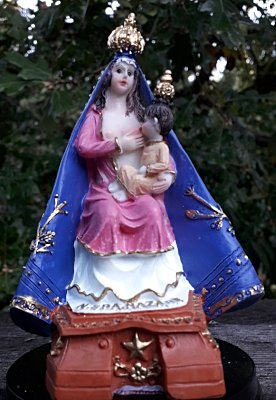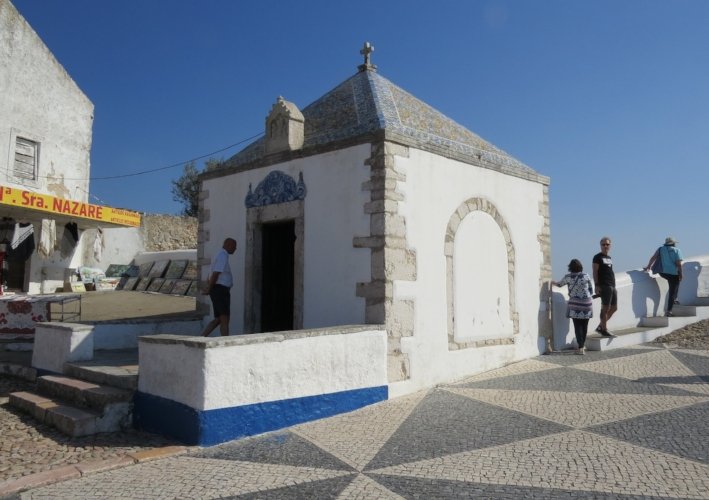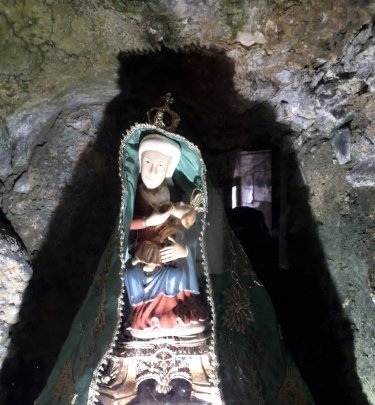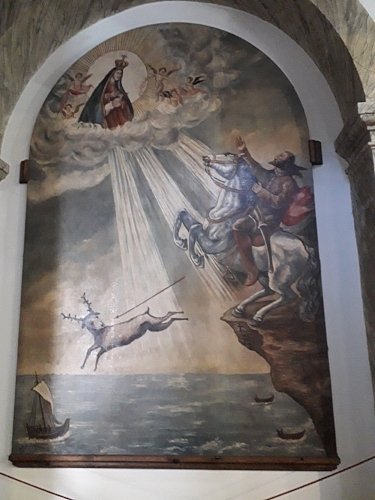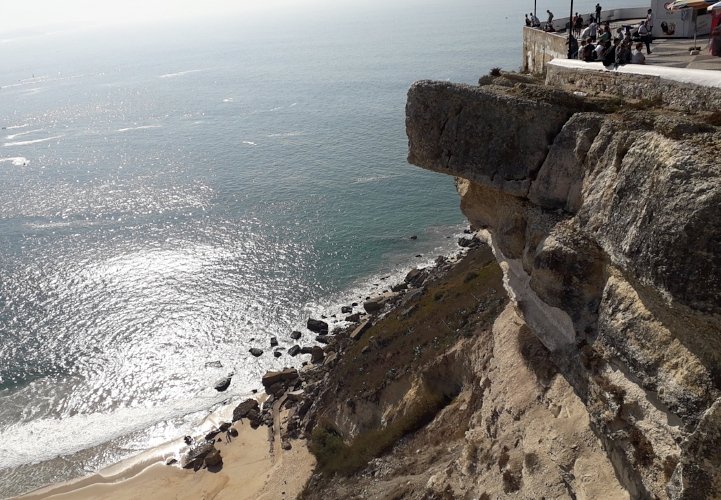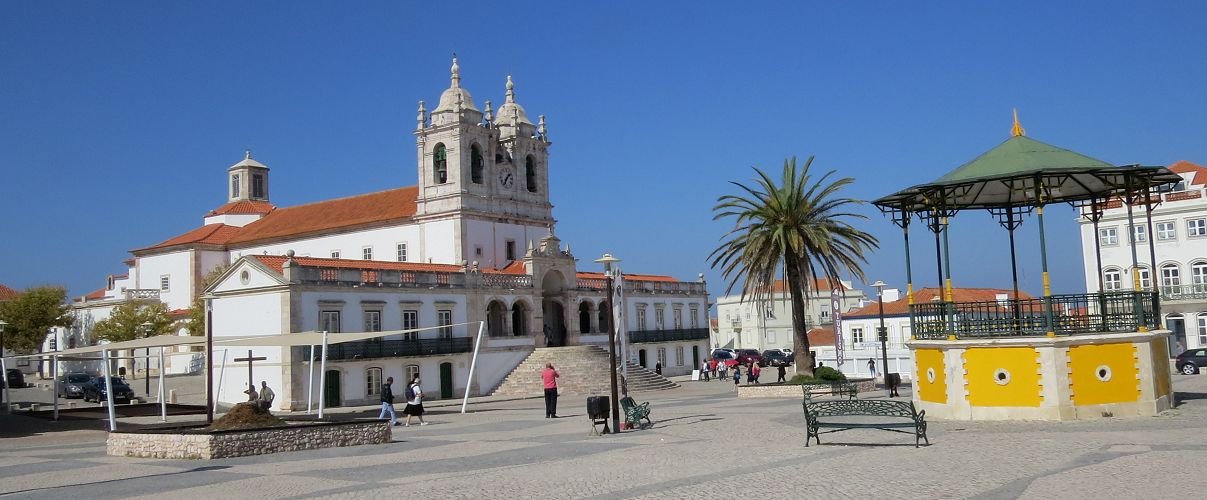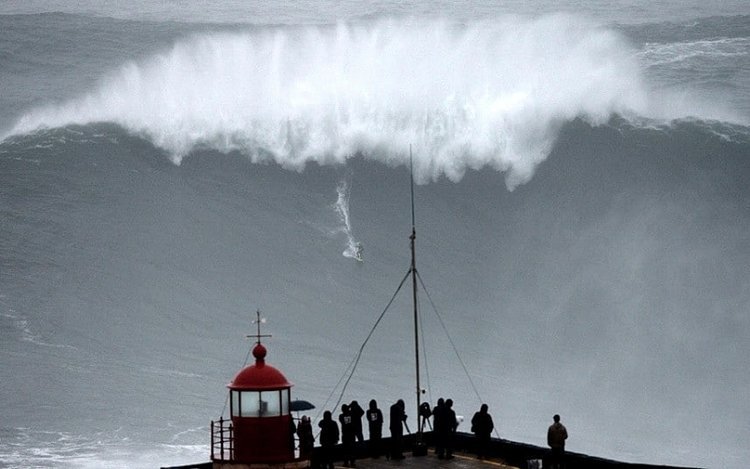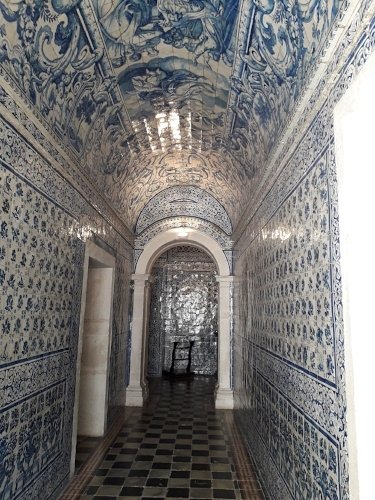Nazaré
Photos: Ella Rozett
Our Lady of Nazareth (Nossa Senhora da Nazaré)
In her sanctuary, Santuario de Nossa Senhora da Nazaré, in the upper part of town called Sitio Nazaré, 25 cm, painted wood, according to tradition 1st century, possibly one of the oldest "Black Madonnas".
Ever since Ean Begg listed this Lady as a Black Madonna in his ground breaking index, she is known as such internationally and she does have a fine patina. However, the local Portuguese don't call her a Black Madonna and the copy in her grotto as well as the copies sold in the museum shop of her sanctuary are all white. Her Portuguese children are far more interested in her breasts than her skin color!
According to an oral tradition inscribed on a memorial stone in 1623 and placed in her "Chapel of Commemoration", the holy image was sculpted by St. Joseph the carpenter step-father of Jesus, in Nazareth, when Jesus was still a baby. A few decades latter St. Luke the evangelist is said to have painted it. That would certainly make it the most ancient image venerated by Christians.
The nursing type of Madonna with the child sitting on her left knee is indeed the oldest type, closely related to Isis and Horus statues. Also, her head dress, a hair net covered by a veil, is typical of Eastern Mediterranean images.
The Legend of Nazaré recounts that on the early morning of September 14, 1182, the knight Dom Fuas Roupinho, the governor of the fortress Porto de Mos, was out hunting with his companions, near the coast. He was chasing a stag in a heavy fog. The deer ran towards the top of a cliff and Dom Fuas in the midst of the fog was cut off from his companions. When he realized he was on the edge of the cliff and in mortal danger, he recognized the place: it was right next to a small grotto where a statue of Our Lady nursing baby Jesus was venerated. So he cried out: "Mother of God, help me!" With that, the horse miraculously stopped right at the edge of a rocky point suspended over the void, saving horse and rider from falling more than 100 meters. That place became known as the Bico do Milagre (Point of the Miracle).
With tears of gratitude running down his face, Dom Fuas dismounted and went straight down to the grotto to give thanks for his miraculous rescue. Then he ordered his companions to fetch masons in order to build a small chapel over the grotto so that the miraculous image could be easily venerated by all and as a memorial to the miracle that saved him. In the process of building this chapel, the masons demolished the existing altar in the grotto. It was normal to sanctify an altar with relics and holy objects and this one was no exception. So when it was disassembled, the relics of two saints and an old parchment recounting the history of the little wooden statue were found.
In an ancient script the parchment declared that the statue had been venerated since the beginning of Christianity in Nazareth. That's why she became known as Our Lady of Nazareth henceforth. In the fifth century she was rescued from the iconoclasts, who were out to destroy all "idols", by the Greek monk Cyriakos. He brought it to the monastery of Cauliniana, near the Spanish town Mérida. The Madonna remained there until 711, the year of the battle of Guadalete, when Christian forces were defeated by Moorish invaders. When the news of the defeat arrived at Mérida, the friars of Cauliniana prepared to leave their monastery. Meanwhile, the defeated king, Roderic, was able to flee the battlefield alone, disguised as a beggar. Without revealing his identity, he asked for shelter at the monastery. Only when he went to confession to one of the monks, Brother Romano, did he have to reveal his identity. The friar, foreseeing the approaching invasion of his monastery, suggested that they fled together, taking with them the monastery's most prized possessions: the relics of Sts. Blaise and Bartholomew and the miracle working image of Mary and baby Jesus.
On November 22nd 711, they ended up on the Atlantic coast of Portugal and settled near a monastery, in an empty hermitage on a rocky hill called Monte de Sao Bartolomeu. After a few days they decided to separate and live by themselves as hermits. The friar took the image and settled in a little grotto, on the edge of a cliff above the sea, next to the hill where the king went on living.
A year went by and Roderic decided to leave the region. Friar Romano stayed in his hermitage above the sea until he died. The holy statue stayed on the altar where he left it until 1182, when Dom Fuas moved it to the so called Chapel of Commemoration, built over the grotto as a memorial to the event that saved his life.
In 1377, because of the increased number of pilgrims, King Fernandohad a church built across the plaza from the chapel, and transferred the statue there. This Santuário de Nossa Senhora da Nazaré (Sanctuary of Our Lady of Nazaré) was remodeled several times since. Inside, a sign reading "to the throne" guides you through the sacristy, a tiled hallway (see photo above), and up some stairs. You really feel like you are going before the throne of the Mother of God!
Besides its "Black Madonna", Nazaré is famous for its giant waves. The biggest wave ever surfed (estimated at almost 100 ft.) crashed against the base of the light house right behind the sanctuary. The light house sits on top of an old fort, on top of a 100 ft. cliff. There's a nice little museum in the fort. Photo by Francisco Leong/AFP/Getty Images taken from a Telegraph post.
Source: a brochure from the museum shop.



